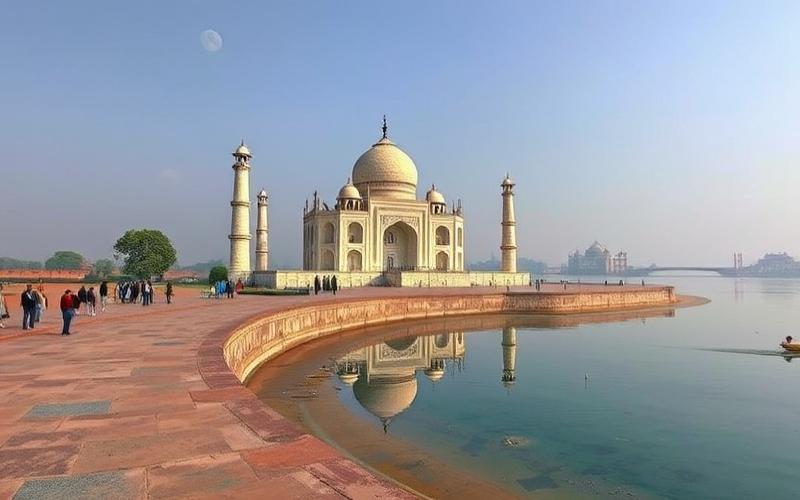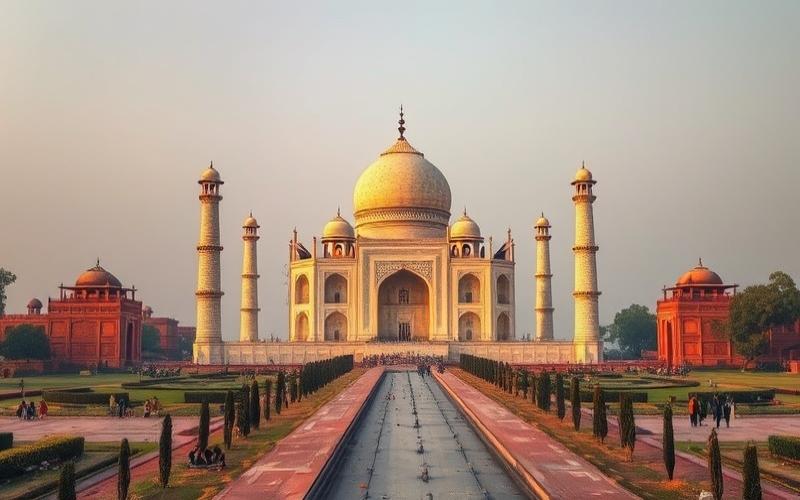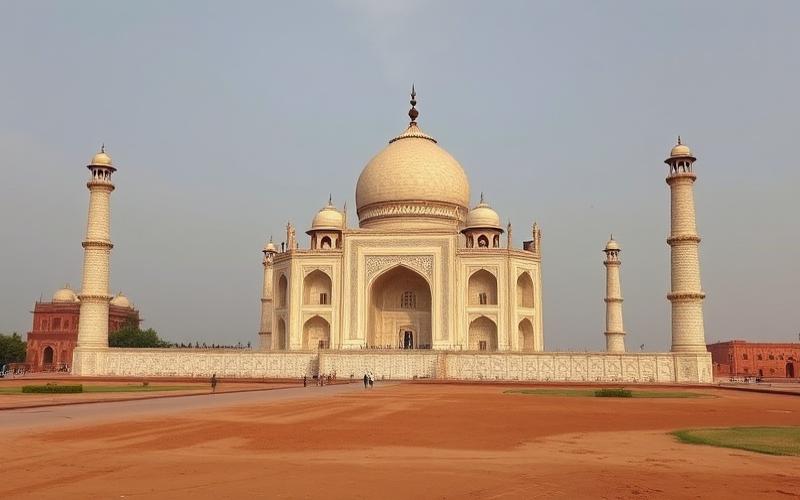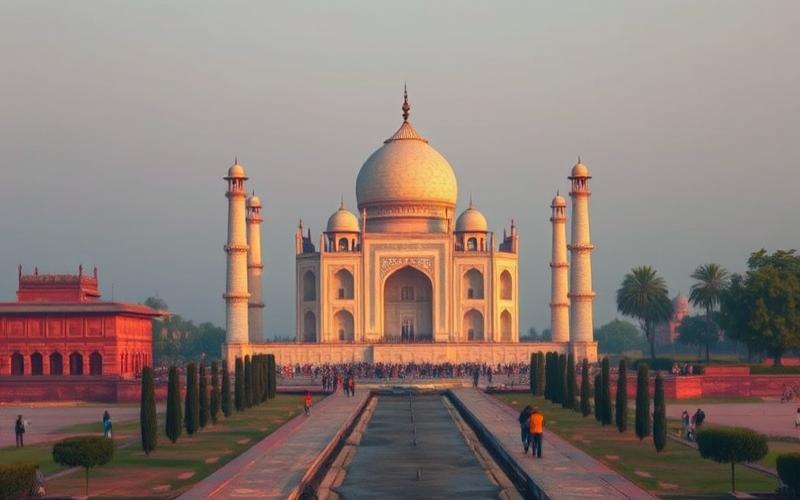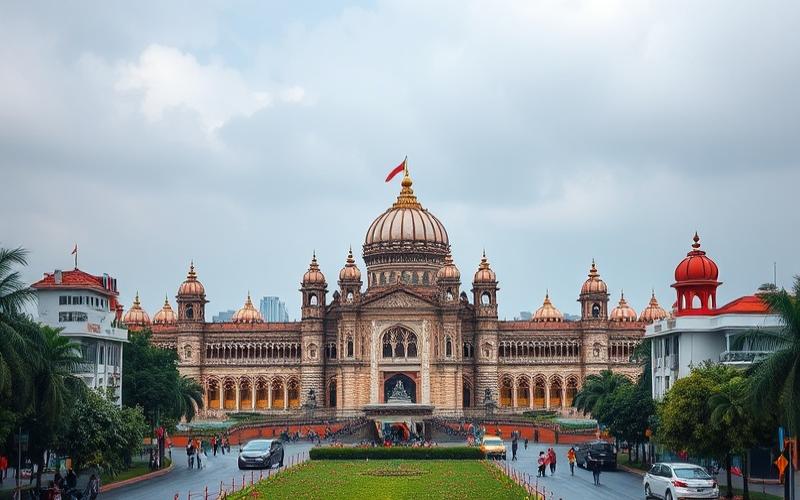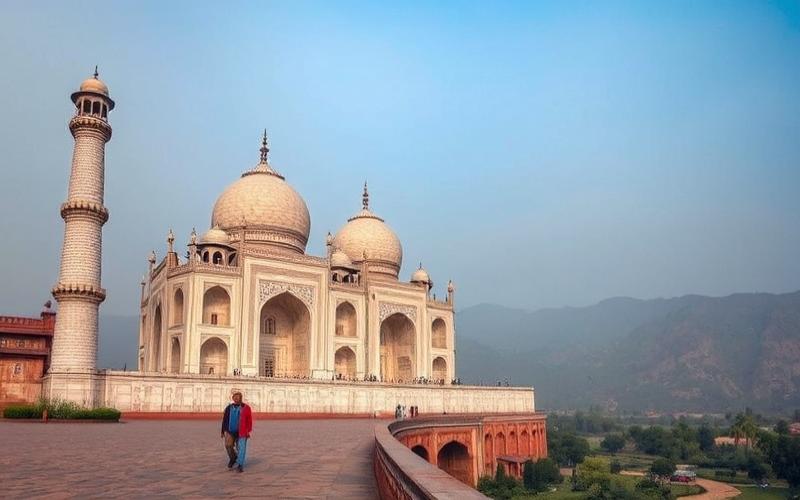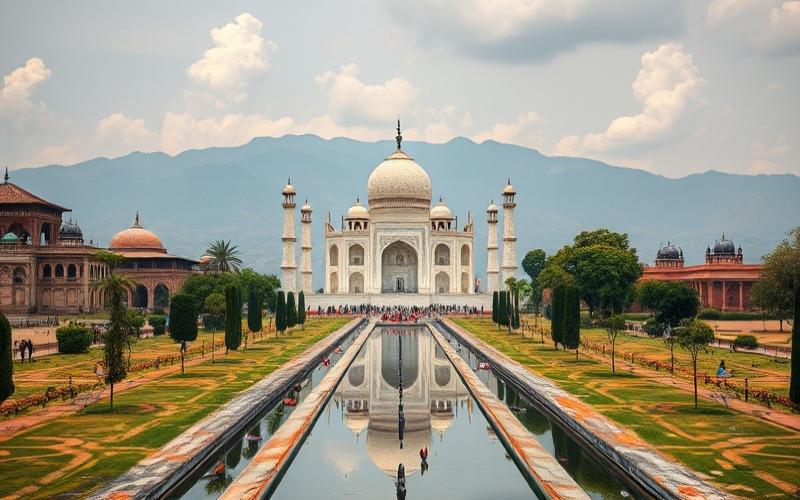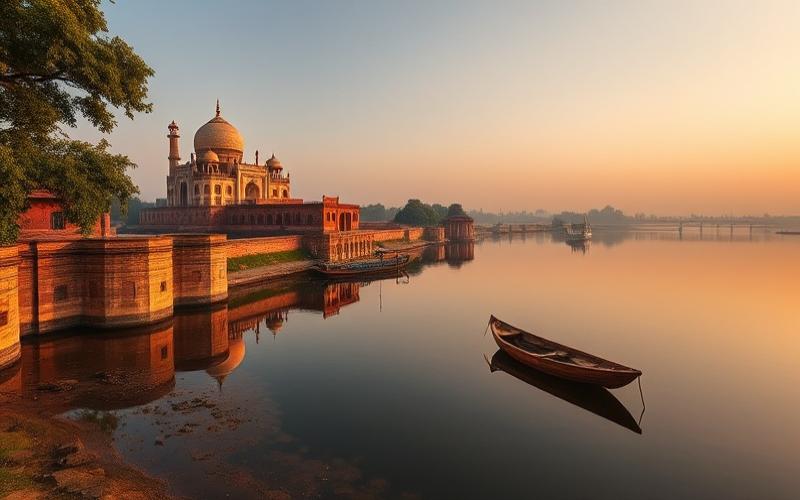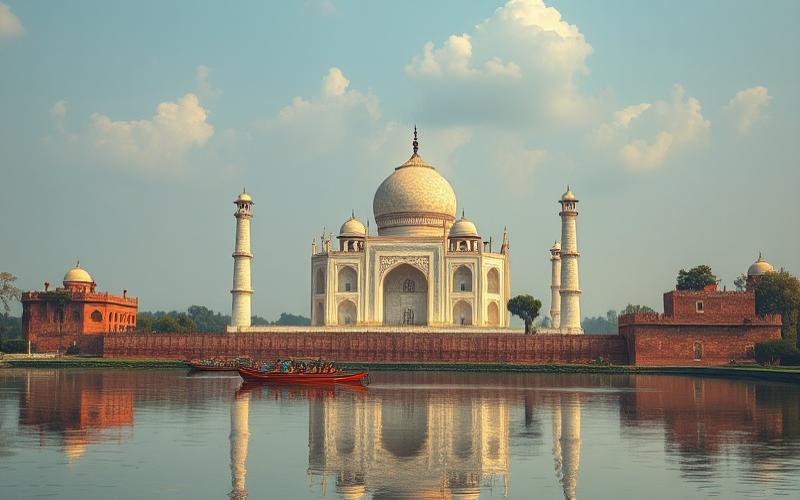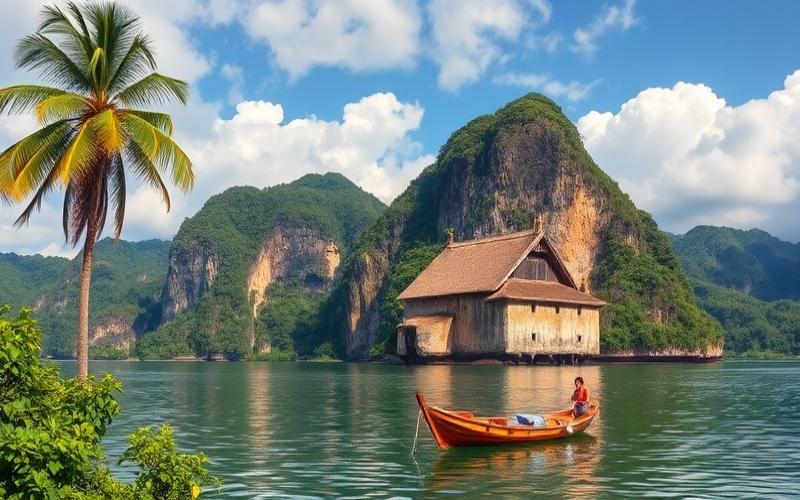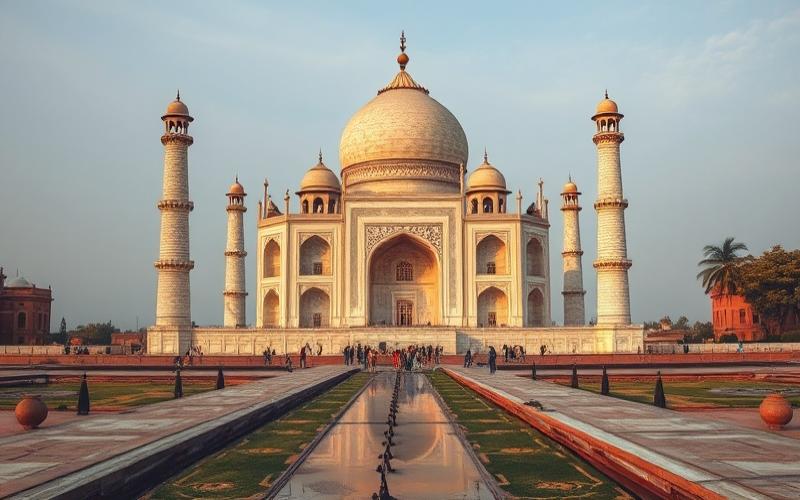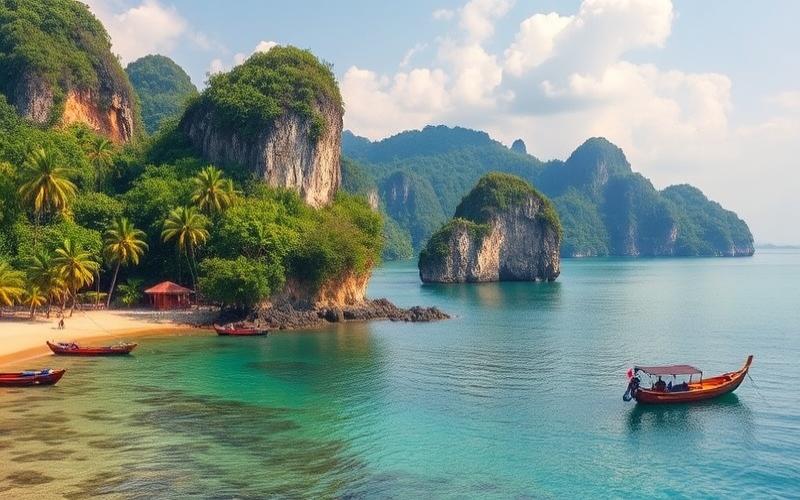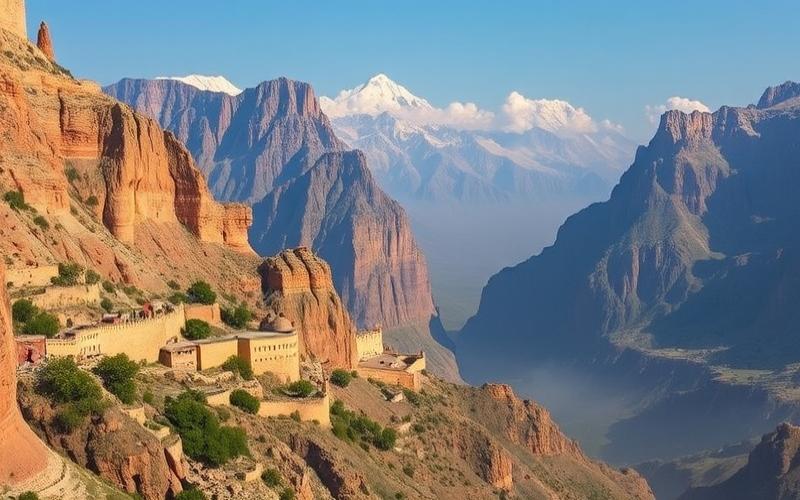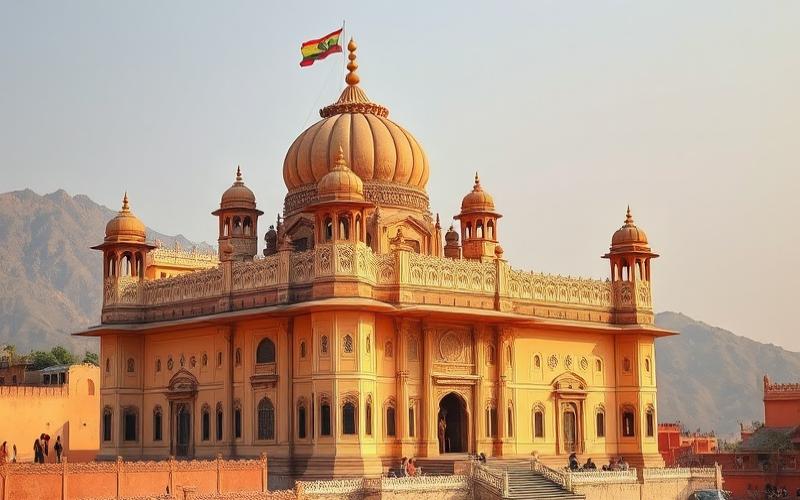
 Published on and written by Cyril Jarnias
Published on and written by Cyril Jarnias
India, with its vast coastlines and rich aquatic biodiversity, offers countless opportunities for fishing enthusiasts. Obtaining a fishing permit is an essential step to access these natural treasures, ensuring your activities take place in authorized and protected areas.
This article will guide you through the complex and necessary procedures to obtain this valuable key, while respecting the various regulations in place that safeguard marine ecosystems and ensure fishermen’s safety.
Discover how to navigate this administrative process while exploring India’s most sought-after regions for fishing, all while ensuring compliance with local laws essential to the sustainability of this exciting activity.
Detailed Administrative Procedures for Obtaining a Fishing Permit in India
List of agencies responsible for issuing fishing permits in India:
- Department of Fisheries (Central & State)
- State Fisheries Departments (e.g., Maharashtra, Kerala, Tamil Nadu)
- District Collector Offices in certain regions
- Local Panchayats for artisanal or community fishing
Required Documents for Application Submission
- Completed official application form
- Copy of identification (Aadhaar Card, passport, or voter ID)
- Recent proof of address
- Recent passport-sized photograph
- Boat owner’s certificate or registration if using motorized fishing
- Medical certificate as per regional requirements
Summary Table of Associated Fees by Permit Type
| Permit Type | Approximate Fees (INR) |
|---|---|
| Individual artisanal fishing | 100 – 500 |
| Commercial fishing | 1,000 – 10,000 |
| Temporary/tourist permit | 200 – 2,000 |
Typical Permit Processing Times
- Online application: 7 to 15 days
- Paper/district application: 15 to 30 days
Specific Conditions by Region/Authorized Areas
Fishing may be prohibited during certain periods (“ban season”), varying by state and species type.
Some states require annual quotas per area and prohibit certain gear or techniques.
Protected areas/marine reserves: Limited access with enhanced control and regular monitoring.
Useful Contacts for Additional Assistance/Information
- National helpline for Department of Fisheries:
1800‐425‐1660 - Official central ministry website: www.dof.gov.in
- Local fisheries offices in each district/state
Practical Tips for Overcoming Administrative Hurdles
- Prepare all original documents and certified copies before submission.
- Check public office opening hours.
- Use the electronic portal when available to track application status.
- Inquire about seasonal restrictions before submission to avoid rejection.
Permit Renewal Procedures
Submit a renewal request to the issuing agency at least 30 days before expiration, provide any updates on identity/address/boat. Fees are generally equivalent to initial application. Presenting the old permit during renewal facilitates the process.
Note: Some states may require on-site physical verification; plan a preliminary visit with local authorities.
Strictly adhere to all specific regional conditions to avoid immediate suspension or permanent denial.
Good to Know:
In India, the process for obtaining a fishing permit varies by state and region, with competent authorities often including state fisheries departments and local councils like the Maharashtra State Fisheries Department or Tamil Nadu Fisheries Department. To initiate an application, prepare copies of your identification, proof of residence, and in some cases, proof of fishing training. Fees may differ based on permit type (commercial or recreational), with costs ranging from 500 to 5000 INR. Processing times vary between 2 to 4 weeks but may extend during peak season. In specially regulated areas like Kerala’s coasts, conditions such as catch limitations may apply. For permit renewal, it’s advised to submit a new application at least one month before its expiration date. Contact regional fisheries offices for specific guidance or to navigate potential administrative complexities, and remember to check restricted zones to avoid fines.
Specific Regulations for Authorized Fishing Zones in India
Main National Laws and Regulations Governing Fishing
- Environment Protection Act, 1986: Governs environmental management, imposes limits on pollution from fishing activities, and empowers authorities to take measures protecting aquatic ecosystems.
- Indian Fisheries Act, 1947: Regulates exploitation of fishery resources, defines offenses and penalties, and authorizes implementation of specific regulations by states.
- Marine Fishing Regulation Acts (MFRAs) of States: Each coastal state has its own legislation for managing marine fisheries in territorial waters, consistent with national laws.
- Indian Constitution: Fisheries management in territorial waters falls under states, while fishing beyond these waters (including the Exclusive Economic Zone, EEZ) falls under the Union.
Types of Permits Required for Fishing
| Fishing Type | Required Permit | Issuing Authority | Specifics |
|---|---|---|---|
| Commercial fishing | Commercial license | State or Union authorities | Specific to vessel type, area, and target species |
| Artisanal fishing | Local permit | Local administration | Often simplified, reserved for local communities |
| Recreational fishing | Special authorization | Local authorities | Often limited to certain areas or species |
- Distinction: Commercial fishing is strictly regulated with quotas and gear restrictions. Recreational fishing is subject to limited periods and areas.
Authorized Zones and Restrictions
- Marine waters:
- 0-5 nautical miles: Reserved for artisanal fishing.
- Beyond 5 nautical miles: Access permitted for trawlers and industrial fishing.
- EEZ (up to 200 nautical miles): Strict national regulation, specific licenses required.
- Freshwaters: Lakes, rivers, and reservoirs subject to local regulations, often with bans during spawning periods and for certain vulnerable species.
- Seasonal and specific restrictions:
- Fishing closures during breeding periods for certain species.
- Temporary bans or quotas to preserve stocks.
Roles of Central and State Governments
- Central Government: Manages fishing in the EEZ and sets major policy and legislative directions, issues permits for deep-sea fishing.
- States: Regulate fishing in territorial waters (up to 12 nautical miles), issue majority of permits, control local resource management.
- Permit acquisition process:
- Submit application to competent authority (State or Union depending on zone).
- Provide documents on vessel, crew, and intended fishing type.
- Issuance after verification of quota compliance, closure periods, and environmental requirements.
Regulations on Equipment and Sustainable Practices
- Ban on certain nets (drift nets, non-selective fine mesh nets).
- Limitations on boat size and power in certain areas.
- Promotion of sustainable practices: quotas, minimum catch sizes, marine protected areas.
- Mandatory use of bycatch reduction equipment (turtle excluder devices, net selectivity).
- Control of landings at official ports to ensure traceability.
Examples of Penalties for Violations
- Substantial financial fines (up to vessel confiscation).
- Revocation or suspension of fishing permit.
- Temporary or permanent fishing ban for repeat offenders.
- Prison sentences for serious or repeated offenses.
- Seizure of illegal catches and non-compliant fishing gear.
Recent Information and Legislative Developments
- Proposed amendments to national laws to strengthen catch control, improve protection of endangered species, and harmonize policies between states and Union.
- Ongoing debates on implementing stricter quotas in the EEZ and extending closure periods for stock preservation.
- Initiatives to recognize and protect customary rights of artisanal fishing communities and promote co-management with states.
Summary of Main Regulations for Fishing Zones in India:
| Regulatory Aspect | Key Detail |
|---|---|
| Major laws | Environment Protection Act 1986, Indian Fisheries Act 1947 |
| Permits | Commercial, artisanal, recreational |
| Authorized zones | 0-5 nautical miles (artisanal), >5 miles (trawlers), regulated freshwaters |
| Restrictions | Seasonal, protected species, quotas |
| Management | States (territorial waters), Union (EEZ) |
| Permitted equipment | Selective nets, sustainable gear |
| Penalties | Fines, permit revocation, confiscation |
| Recent developments | Strengthened quotas, recognition of customary rights |
Good to Know:
In India, fishing is governed by several key laws, including the Environment Protection Act of 1986 and the Fisheries Act of 1947, which establish frameworks for conservation and sustainable use of aquatic resources. Different permit types exist based on zones, clearly distinguishing between commercial and recreational fishing. Authorized areas include both maritime and freshwater spaces, with certain seasonal or species-specific restrictions. Fishing zone management is a shared responsibility between central and state governments, involving a permit application process specific to each region. Regulations also include strict standards on permitted fishing equipment and encourage sustainable practices. Violations of laws, such as fishing in prohibited zones or using illegal gear, can lead to severe penalties ranging from fines to equipment confiscation. Furthermore, recent amendment proposals aim to strengthen environmental protection measures to adapt regulations to current challenges.
Practical Tips for Expatriate Anglers in India
Understanding local regulations is an essential step for any fishing practice in India. Different permit types exist depending on the region, fishing type (recreational or commercial), and target species. Certain fish species are protected and their capture is strictly prohibited. Indian authorities regularly publish lists of threatened species, and fishing quotas are often implemented to preserve biodiversity.
| Permit Type | Usage | Issued By |
|---|---|---|
| Recreational permit | Leisure fishing | Local or state services |
| Commercial permit | Profit-oriented fishing | Ministry of Fisheries |
| Special permit | Specific species, research | Competent authorities |
Expatriates should inquire with local authorities (state government, fisheries ministry) to obtain the correct permit, as rules vary from state to state and by water body type.
Authorized fishing zones differ across India by region and water type. Generally, fishing is permitted in certain rivers, lakes, and reservoirs for inland waters, while specific coastal areas are designated for sea fishing. It’s important to note that some nature reserves and national parks prohibit all fishing activities.
| Region | Water Type | Specifics for Expatriates |
|---|---|---|
| Kerala, Goa | Coastal zones | Permit required, strict regulation |
| Karnataka, Assam | Inland waters | Fishing allowed per local quotas |
| Andaman & Nicobar | Sea, lagoons | Restricted access, mandatory permit |
Integrating into local fishing communities provides access to practical information about the best areas, suitable techniques, and fishing seasons. Local fishermen are often willing to share their knowledge and accompany newcomers, which also helps in understanding administrative or cultural subtleties.
Fishing seasons in India are regulated by the monsoon and fish breeding cycles. The monsoon period (June to September) is generally a closed season for fishing, as it corresponds to the spawning of many species. Permit availability and catchable species diversity therefore vary significantly by season.
For purchasing suitable fishing equipment, it’s advisable to visit specialized markets in major coastal cities (Mumbai, Chennai, Kochi) or shops near renowned fishing areas. Major local retailers offer gear designed for Indian conditions, including lines and baits adapted to local species.
Safety Tips
- Always check weather forecasts before fishing trips, especially at sea.
- Wear a life jacket and carry a charged mobile phone.
- Be cautious of marine animals (jellyfish, sea snakes, crocodiles in certain rivers).
- Inform someone of your itinerary, particularly during isolated outings.
Fishing in India carries strong cultural and social dimensions. Many communities depend on fishing, and some practices are ritualized. It’s essential to respect local traditions, for example by participating in ceremonies or avoiding fishing during certain religious festivals.
Navigating the Indian administrative system to obtain or renew a fishing permit requires patience and diligence: prepare all necessary documents (passport, visa, proof of residence), complete forms online or in person, and follow local authority instructions. Administrative delays are common; relying on local advice is often helpful.
Expatriate Anecdote
A French angler based in Goa recounts accessing a highly productive fishing area after being invited on a sea trip by a local fishing family, following his participation in a village festival. He emphasizes that without their support, he could never have obtained the necessary authorizations or understood the best times to catch desired fish.
Testimonial
“The first time, I tried to get a permit alone in Mumbai, but the language barrier and procedure complexity discouraged me. It was only after joining a local fishing club that I could finalize the process quickly and discover new fishing spots, while avoiding beginner mistakes.”
Key Takeaways
- Prioritize learning about local regulations and required permits.
- Favor integration into local communities to save time and avoid errors.
- Adopt behaviors respectful of traditions and the environment.
Good to Know:
Understanding local regulations is crucial for any expatriate angler in India; permits vary by region, and certain protected species prohibit their fishing. Expatriates can fish in designated areas, like inland waters of Kerala’s rivers or Goa’s coasts, but must verify local legislation. Integrating into local fishing communities can provide practical information and valuable support. Fishing seasons, influenced by the monsoon, impact fish availability and permit issuance. For equipment, prefer local markets offering gear adapted to Indian conditions. Among precautions, be attentive to weather changes and potential encounters with marine animals. Culturally, being respectful of local traditions and participating in community celebrations enriches the experience. Navigating the administrative system can be complex; it’s essential to keep permits updated, following advice from established experienced anglers, who often share their experiences and tips on dedicated forums or social media.
Disclaimer: The information provided on this website is for informational purposes only and does not constitute financial, legal, or professional advice. We encourage you to consult qualified experts before making any investment, real estate, or expatriation decisions. Although we strive to maintain up-to-date and accurate information, we do not guarantee the completeness, accuracy, or timeliness of the proposed content. As investment and expatriation involve risks, we disclaim any liability for potential losses or damages arising from the use of this site. Your use of this site confirms your acceptance of these terms and your understanding of the associated risks.


